Editorials
5 Deep Cut Horror Movies to Seek Out in July 2024

New month, new horror recommendations from Deep Cuts Rising. This installment’s five selections reflect the month of July 2024.
Regardless of how they came to be here, or what they��re about, these past movies can generally be considered overlooked, forgotten or unknown.
This month’s offerings include a snake thriller, a giallo, and more.
Death Walks on High Heels (1971)
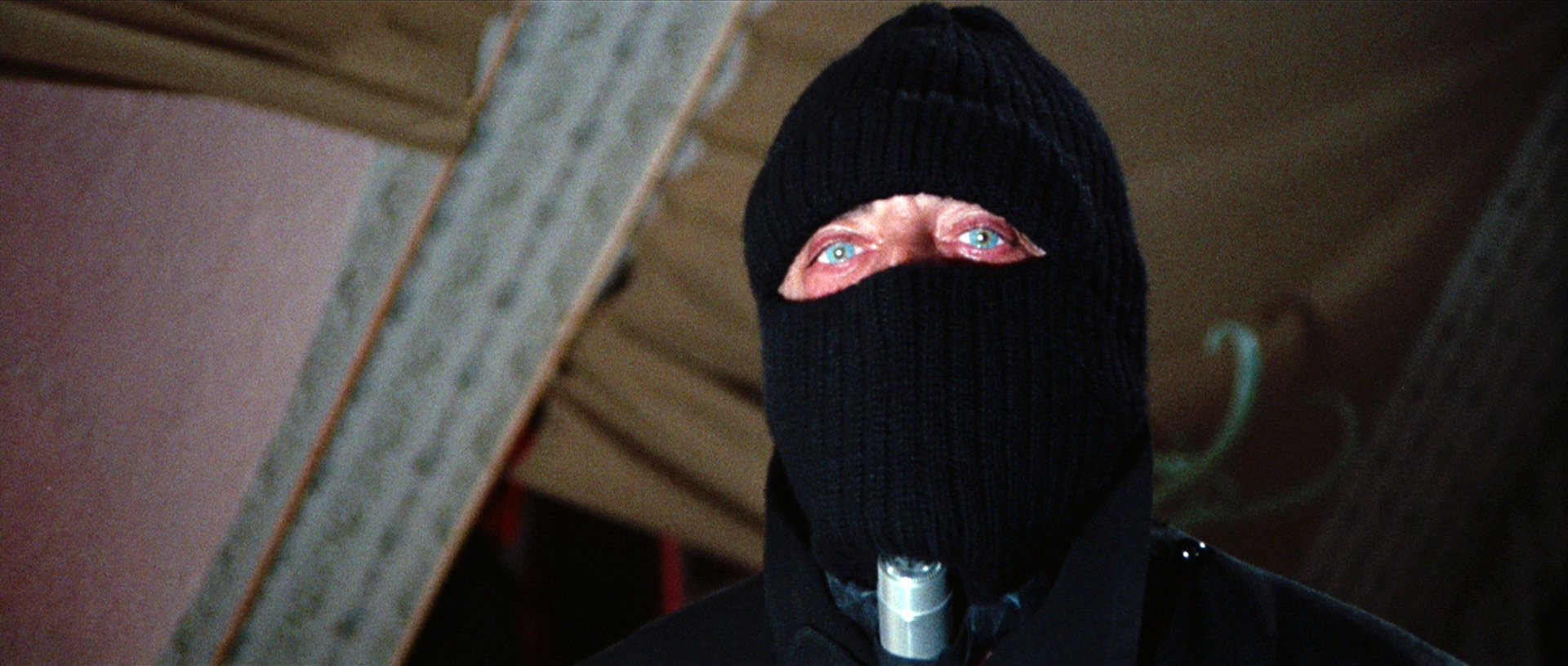
Death Walks on High Heels (1971)
Directed by Luciano Ercoli.
For fans, July is dedicated to gialli. And one giallo that doesn’t come up too often in discussions is Death Walks on High Heels (La morte cammina con i tacchi alti in Italian). After Nieves Navarro‘s character’s father — a jewel thief — is murdered, the masked assailant comes after the daughter. The protagonist flees to England, however, her pursuer won’t stop until he gets what he seeks.
Death Walks on High Heels never quite reaches the heights of its contemporaries, yet the twisty story, small bursts of style, and a potent third act make Ercoli’s movie enjoyable.
Death Walks on High Heels is now streaming on SCREAMBOX.
Of Unknown Origin (1983)

Directed by George P. Cosmatos.
This entry works for Ratcatcher’s Day (July 22) and Paperback Book Day (July 30). Of Unknown Origin is based on the novel The Visitor by Chauncey G. Parker III, and the movie stars Peter Weller of RoboCop fame. Shannon Tweed also had her acting debut here. The story follows a father and husband (Weller) who stays behind in his family’s brownstone as his wife and son go on vacation. What should have been a productive time soon becomes an all-out battle once the main character learns he has a rat infestation and goes to great lengths to wipe out the vermin.
While Of Unknown Origin is more of a laser-focused psychological horror story than a typical creature-feature, it does contain intense man-versus-beast action. Weller’s performance can be praised as well.
Catch Of Unknown Origin on VOD sites like Prime Video and Apple, and it’s also available on Blu-ray from Shout! Factory.
Fair Game (1988)

Fair Game (1988)
Directed by Mario Orfini.
The Italian-made thriller Fair Game (also known as Mamba) is suitable for World Snake Day (July 16). This cat-and-mouse movie pits a woman (Trudie Styler) against her ex (Gregg Henry) as well as a highly venomous mamba. The main character is trapped in her apartment with the creature, who has been been made more aggressive for this special occasion.
Although this movie has pacing issues, and the high concept would better serve a shorter feature or even a segment of an anthology, it does manage to brew some suspenseful moments.
Fair Game is now streaming on Tubi.
The Paperboy (1994)

The Paperboy (1994)
Directed by Douglas Jackson.
While The Paperboy brings up Boston, this is, in fact, a Canadian production. Marc Marut plays the titular 12-year-old whose paper route includes murder. He soon target his latest victim’s daughter, who is played by Christine co-star Alexandra Paul.
The Paperboy won’t likely replace The Good Son or Orphan as everyone’s favorite “killer kid” movie, but the sinister atmosphere and (unintentional) humor help it stand out. House star William Katt also supports Paul and Marut here, with the latter’s performance being truly wild.
Looking for Canadian horror for Canada Day (July 1)? The Paperboy is now on Prime Video.
Estranged (2015)

Estranged (2015)
Directed by Adam Levins.
Estranged demonstrates how dangerous it can be to forget the past. Amy Manson‘s character is returned to her family after a bad accident while living abroad. She uses a wheelchair for the time being, and her memory is affected. As she reunites with her family though, the main character can’t help but feel like something is “off” about them…
This dark British movie can be viewed on I Forgot Day (July 2). It sports enough shocks to make it memorable. Estranged is now streaming on Tubi.
No genre is as prolific as horror, so it’s understandable that movies fall through the cracks all the time. That is where this recurring column, Deep Cuts Rising, comes in. Each installment of this series will spotlight several unsung or obscure movies from the past — some from way back when, and others from not so long ago — that could use more attention.

Editorials
‘How to Make a Monster’: The 1950s Original and the 2001 Update [Revenge of the Remakes]

Before you dart toward the comments to argue that George Huang’s How to Make a Monster isn’t a remake, let me explain why it’s my focus this month.
In 2001, legendary special effects artist Stan Winston co-produced a series of made-for-cable “remakes” alongside Colleen Camp and Lou Arkoff based on AIP horror flicks of the 1950s. They were all monster films based on Samuel Z. Arkoff properties (Lou’s father) under the banner “Creature Features.” Winston developed these films for Cinemax and HBO, where they’d haunt late-night rotations. He even turned his “Creature Features” villains into a toy line, although sales were underwhelming because the figures released out of synch with each premiere.
I used quotations around “remakes” above because 2001’s How to Make a Monster is a remake by title only. Herbert L. Strock’s 1958 original is about a makeup effects artist who uses his secret foundation recipe to control actors. Huang’s Aughts update is decidedly not. They’re both horror movies, and they’re both about creative artists who are doomed by their professional obsessions, but they’re hardly siblings. How to Make a Monster is an example of a remake that barely engages with its source material; think House of Wax (2005). That’s why it’s under my microscope. It’s an entirely different “remake” despite being in a collection touted as all remakes.
Why snag rights to create something with zero resemblance to the first? Let’s investigate.
The Approach

‘How to Make a Monster’ (1958)
I’m still trying to figure out why Winston produced a remake of a horror movie about a mad special effects artist … and removed the special effects story. Writers Herman Cohen and Aben Kandel wrote a story about how the horror genre is always in demand — how the “horror cycle” always returns — making the call from inside Hollywood. It’s brilliant and could have been adapted so easily after Scream introduced the late 90s/early 00s meta-horror movement. The entry point for a How to Make a Monster remake was handed to Huang on a silver platter, who smacks the opportunity to the ground. Everything tantalizing about Cohen and Kandel’s industry-skewering thriller is switched for another generic monster-of-the-day blueprint about a murderous video game.
American International Studios is traded for Clayton Software in the Creature Features version. Robert H. Harris’ master creature designer (Pete Dumond) swaps for Steven Culp’s savvy businessman Peter S. Drummond — if that’s even a callback to the original protagonist’s name. Clayton Software CEO Faye Clayton (Colleen Camp) hires Pete and his trifecta of oddball programmers to fix their laughingstock of a horror video game, “Evilution.” To make matters worse, when testing the clanky motion capture suit (worn by “Queen of B-movies” Julie Strain), systems overload and reboot efforts bring the suit to life. With the deadline rapidly approaching, Pete, his team, and intern Laura (Clea DuVall) find themselves fighting the very game they created, now an immersive experience hunting them around Clayton Software’s high-tech facilities.
If you squint, you can see where Huang tries to honor the vastly superior 1950s spectacle. Peter S. Drummond allows himself to be consumed by his profession the same way Pete Dumond burns alive with his “children” (a unique collection of movie-made masks). Faye, the corporate overlord type, demands that Evilution be scarier, alluding to a world where horror is not only thriving but the driving force behind entertainment companies — precisely what Strock tries to say, albeit through vastly different means. In both films, victims are killed by a monster controlled by “magical” means, be they hypnotic adhesive cream or haywire artificial intelligence. That’s the best I’ve got.
The approach? It’s like Huang accidentally spilled water on a whiteboard with Cohen and Kandel’s original outline, erased everything, and pieced together a story based on objects you’d find in a teenage boy’s bedroom (Playboy posters, computer games, plastic swords).
Does It Work?
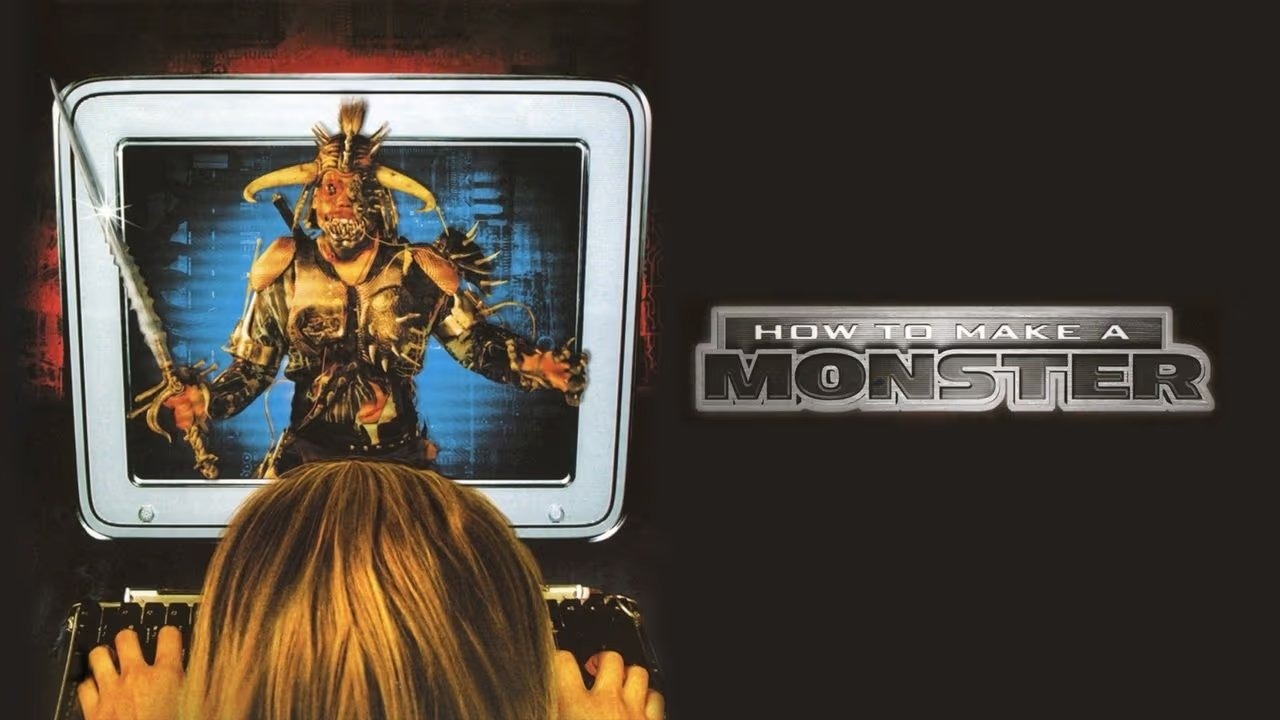
‘How to Make a Monster’ (2001)
Answering “Does it Work?” is complicated because that depends on whether you classify How to Make a Monster (2001) as a remake. I do because a remake in name only is still a remake; it’s just a different conversation than usual around these parts. “But Matt, you’re always saying remakes should be original.” Correct! They should also resemble their original — that’s the balance. What’s the point when you abandon everything about an original work but slap the name on the can for nostalgic appeal? It’s an unfortunate case of false representation in this case, really.
Huang adapts “How to Make a Monster” as a concept, not an existing film. The words in the title inspire his remodel. Standard damn-the-man ammunition fires at corporate America instead of Hollywood studios, and the monster’s beginnings reflect Frankenstein more than anything psychologically supernatural. It’s not a terrible idea — I’ll always advocate for more video game horror titles like Stay Alive — but it’s an underwhelming idea compared to Strock’s innovative approach to industry shenanigans. Huang’s screenplay isn’t breaking new ground by saying people are driven by money and the wrong types of number-crunching suits run creative industries.
On a more positive note, Huang’s special effects creatives don’t undersell the nightmarish details of the film’s video game adversary. Where Stronk’s antique is an accomplished example of old-school makeup techniques, turning pretty-boy leading men into werewolves and bulgy-eyed freaks, Huang’s crew imagines a more techno-horror barbarian. How to Make a Monster lets Winston showcase his talents, stepping in for the fictional Pete Dumond — or, more appropriately, visual effects creator Paul Blaisdell (whose iconic masks were lit ablaze in the original’s finale inferno). The prior creations look fabulous for their period, and so does Evilution’s medieval hellspawn — at least Huang brings that competency to the table.
The Result
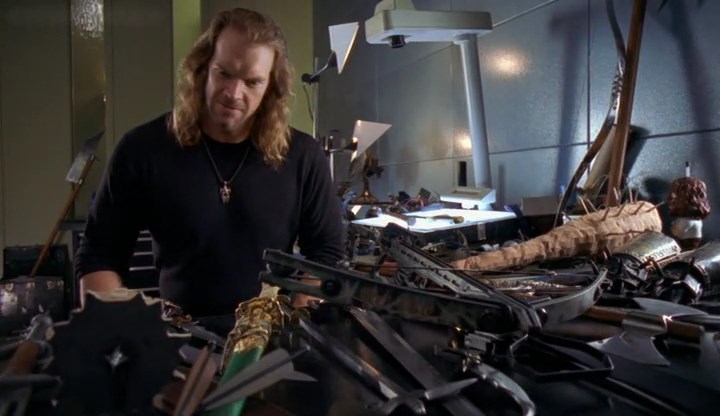
‘How to Make a Monster’ (2001)
Strock’s How to Make a Monster (1958) is imaginative fine dining; Huang’s How to Make a Monster (2001) is a lukewarm seven-layer dip made from nothing but on-sale processed ingredients. The remake is an after-dark cable special that is appreciated as a sort of cult classic, hardly recognized past its monster effects and goofball humor. Many an underage child no doubt felt a sexual awakening thanks to Julie Strain’s nudie mo-cap routine, or covered their eyes when mangled body parts became a demonic skeleton Viking with metallic orbs for eyeballs. It’s hardly bulletproof nor a proper representation of Strock’s more successful ideas, existing in a pre-streaming era where straight-to-TV specials on unrated channels could perv out and heap on gore without censorship. Better times, worse times; those days were a bit of both.
Neither film overlaps characters or performances, so the new cast has no crossover points. Tyler Mane as Triple H Lite “Hardcore,” Jason Marsden as squeaky-voiced “Bug,” and Karim Prince as Boris Grishenko wannabe “Sol” play aggressively 2000s programmer stereotypes from the meathead weapons expert (Mane) to acne-suffering dweeb (Marsen). They’re all hamming up caricatures drawn by outsiders responding to the prompt “video game addict,” making the most of a silly script that only cares about making a monster (as the title states). Strock directs something more sinfully sophisticated, while Huang creates something you’d download off Limewire along with twenty new viruses. There is no harm in either, although Clea DuVall cannot escape terrible dialogue ripped from a company’s corny in-house workplace behavior training video.
I’d reckon How to Make a Monster plays infinitely better if you’ve never seen the (mostly) black-and-white original. Huang’s erasures and modifications are a different flavor of horror cinema, like a store-brand box of macaroni and cheese (not even Kraft). Both films question whether the right people are in charge of creative industries, but Huang’s execution is far more redundant. “The Monster” stalks characters one by one; they die bloody deaths, and Laura eventually has to vanquish the game’s horned-skull boss in reality because everyone loves a final girl. It’s just a shame the Cinemax remix has nothing to say about the industry outside references like Pikachu skins used for horrendously pixelated demons in Evilution, or an Evil Dead: Hail to the King poster in the background.
The original wants to say something; the remake wants to slay something.
The Lesson

‘How to Make a Monster’ (2001)
There’s a fine line between remakes with their own personality and remakes that completely negate the source material. How to Make a Monster (2001) chooses the latter, and it’s a foolish option. I’m still gobsmacked by the refusal to take an easy layup of going all New Nightmare or Scream 3 with How to Make a Monster, especially with Winston’s involvement. Imagine a horror movie where “Fake Stan Winston” was creating astounding horror creatures only he could control, for example. It didn’t even have to be applied makeup effects only! What if Winston’s Pumpkinhead suit came alive and started lurking around his latest sequel’s set?
There’s a much better How to Make a Monster remake somewhere out there that has not yet been made — maybe focusing on Tom Savini or at least his accomplishments in the field?
So what did we learn?
● Michael Myers got killed by a video game skelly boi?
● The 2000s illustrations of post-Y2K “nerds” sure have aged hilariously, in a film so “2000s,” there’s a P.O.D. needed drop that isn’t “Boom.”
● A remake should at least want to try to resemble its original, just a little bit.
● Is a remake by name even a remake? Yes, it is, but whether that’s a feature or bug is up to you.
You ever turn a movie on, a certain scene hits, and suddenly, you realize you’ve seen said movie a bunch growing up? That happened to me while watching How to Make a Monster (2001). It was a late-night Cinemax staple when I was the right age. I used to sneak-watch Huang’s flick before my horror fandom days, definitely without my mother’s permission (she was the Ratings Police in my household). When Monster Sol pops onto the screen, colored wires hooking into his skin, those chrome Baoding balls shoved into his eye sockets, nostalgia socked me in the face. Not even Strand’s jiggling fetishistic cosplay could jostle the memory free, but “Dead Sol” did the trick.
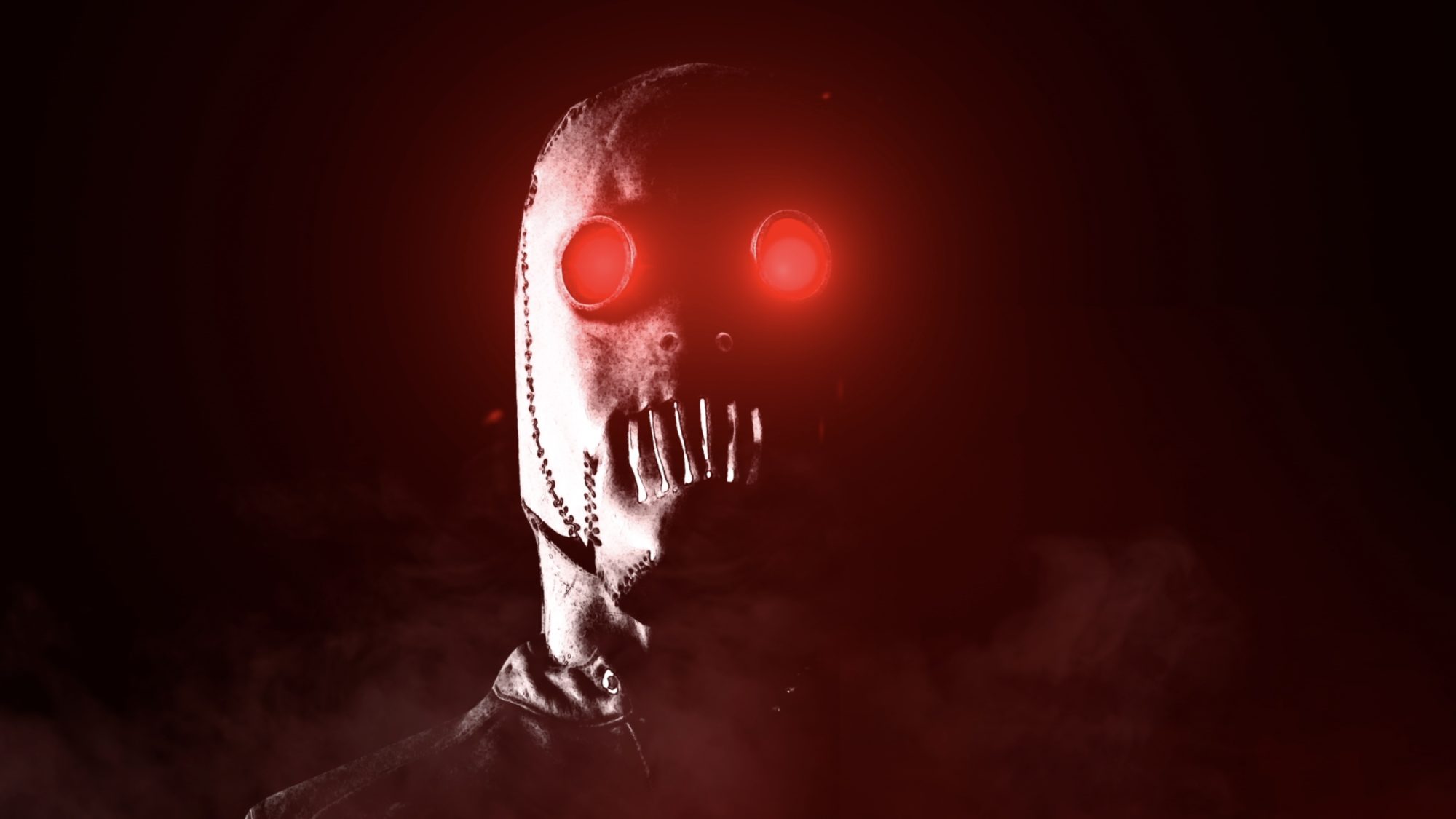

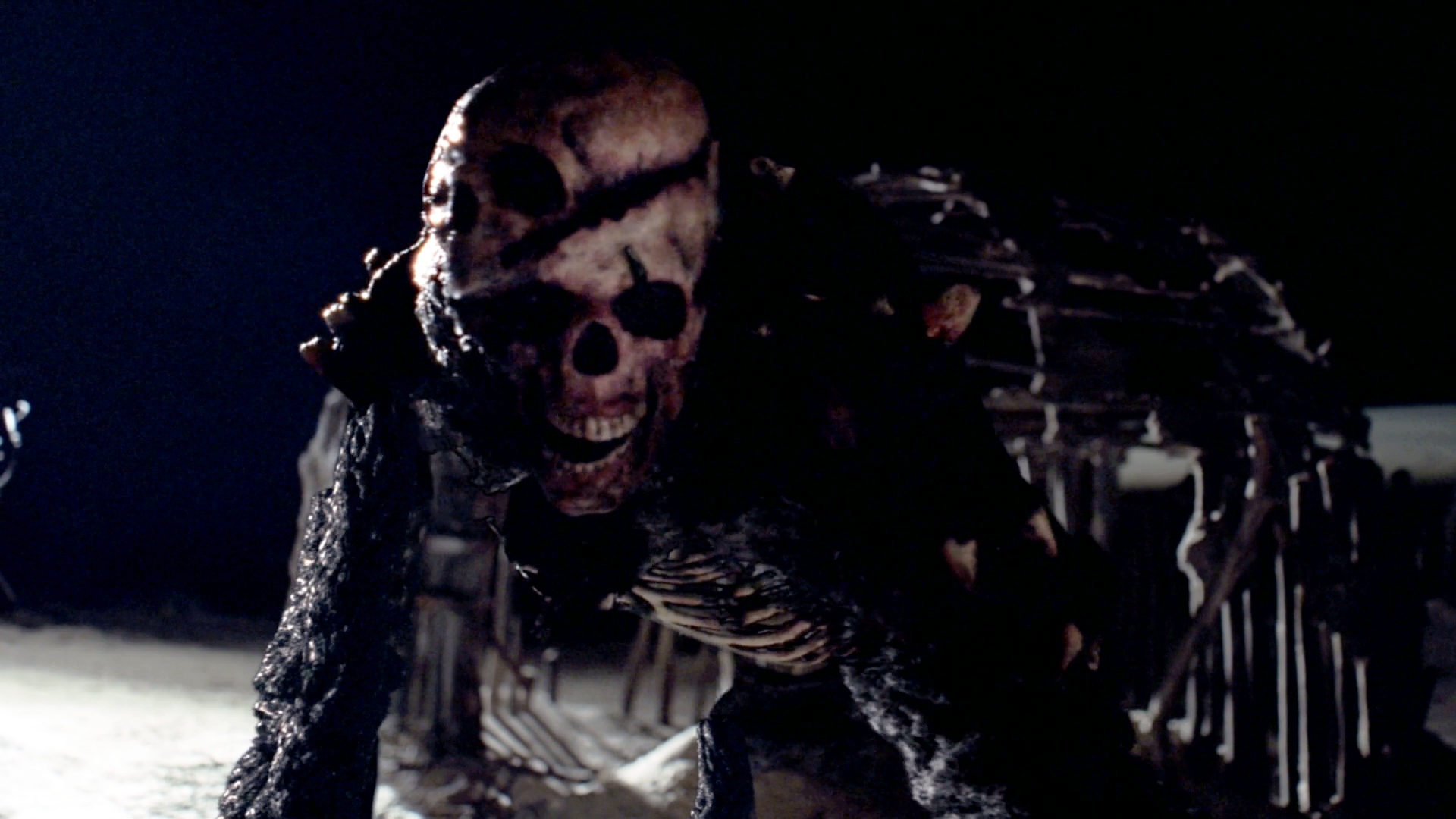


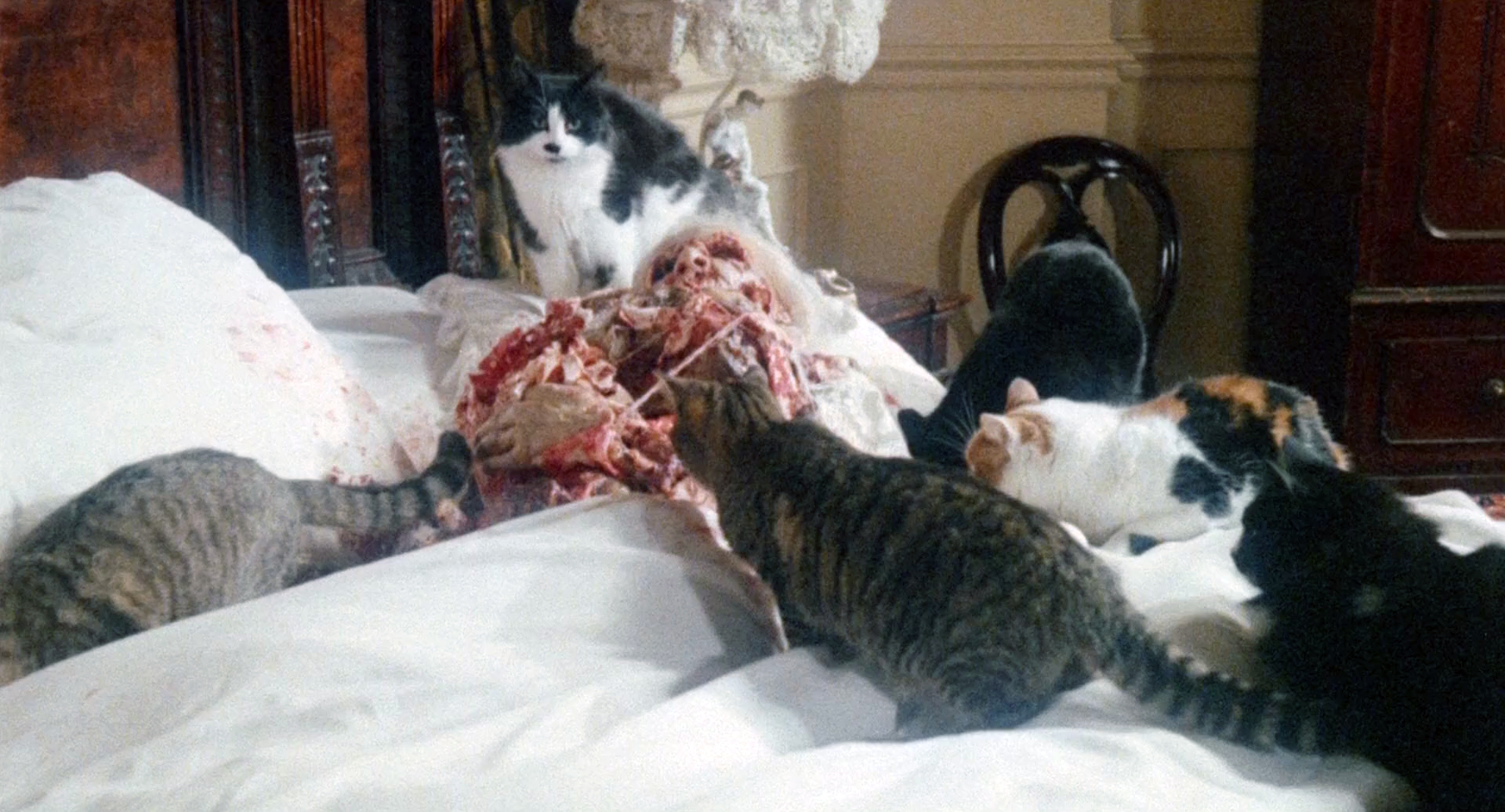

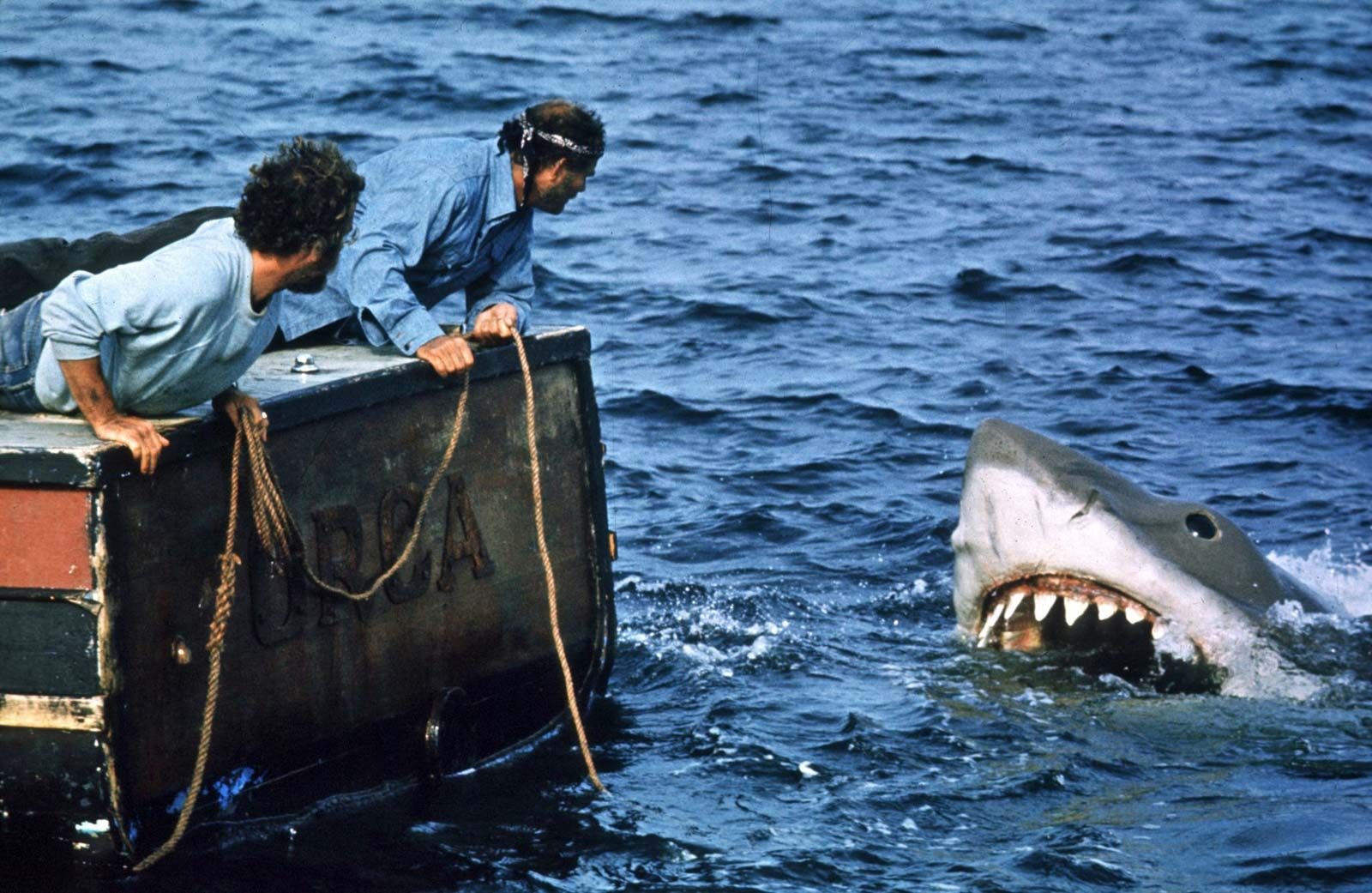

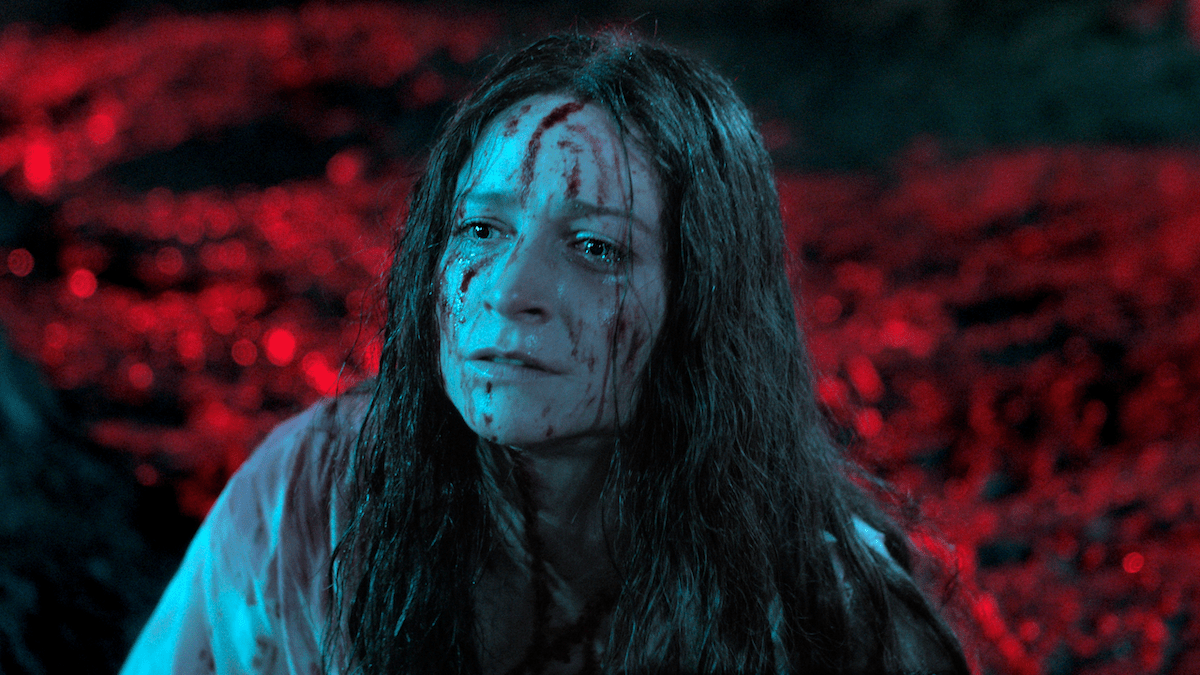

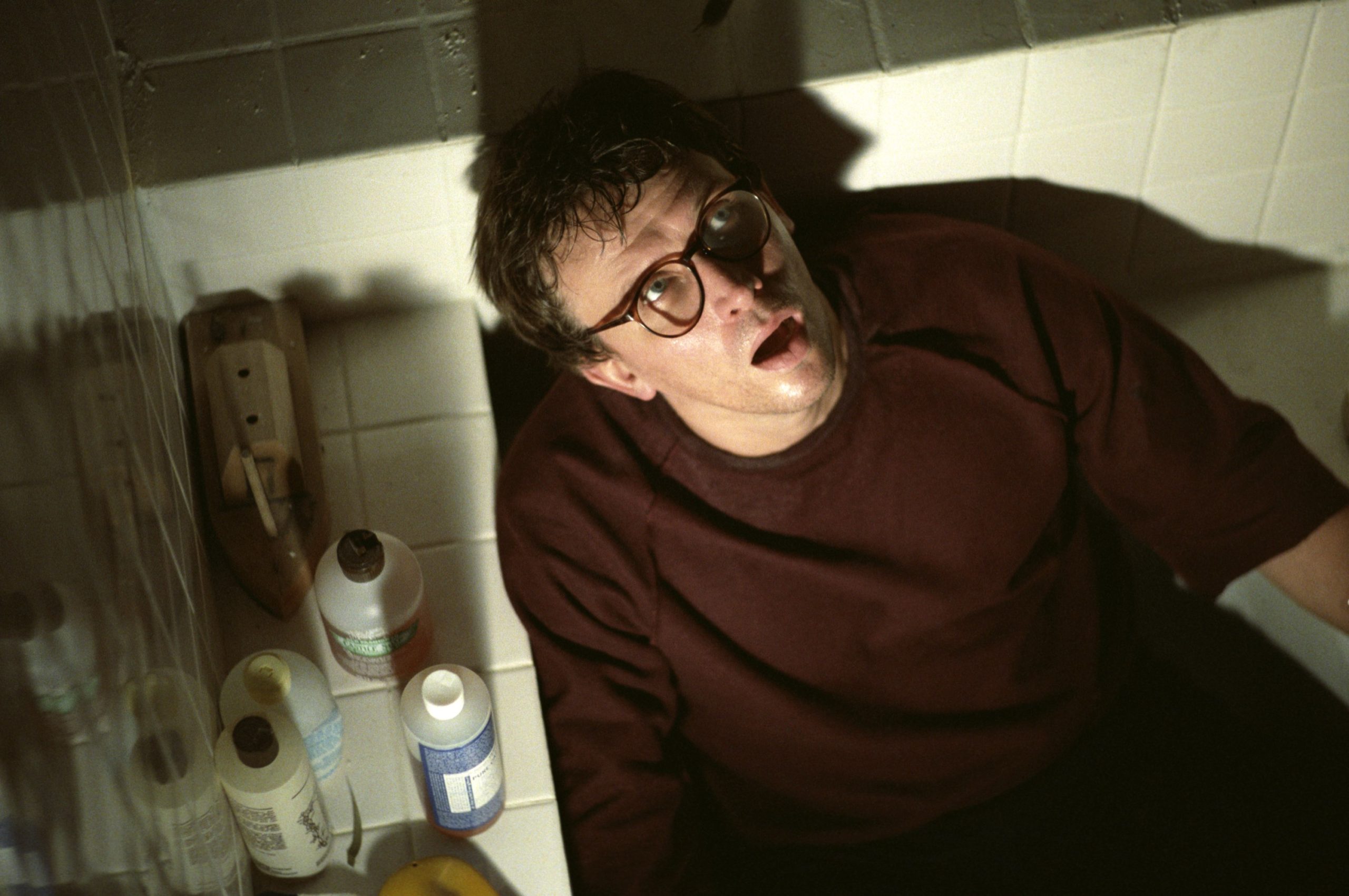

You must be logged in to post a comment.